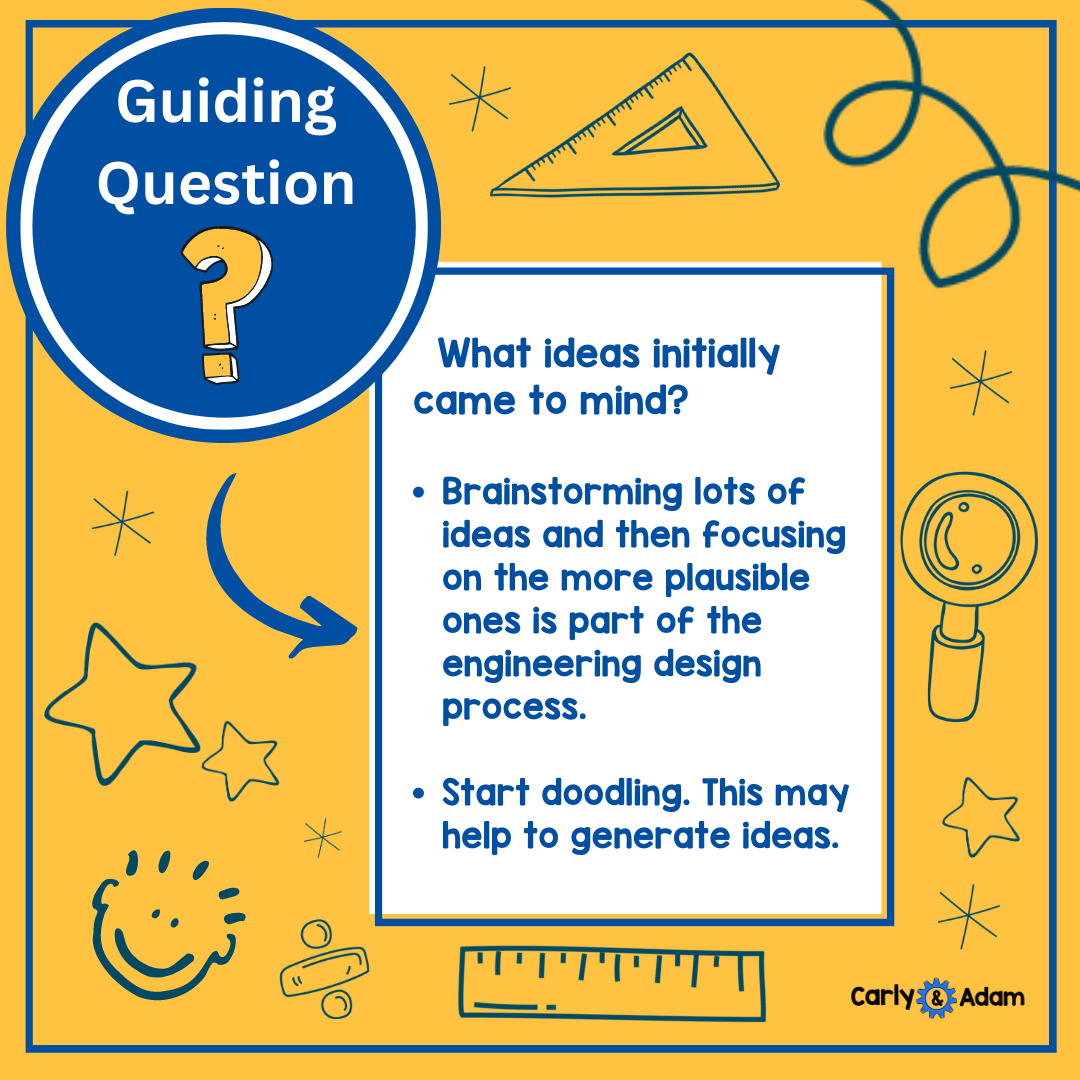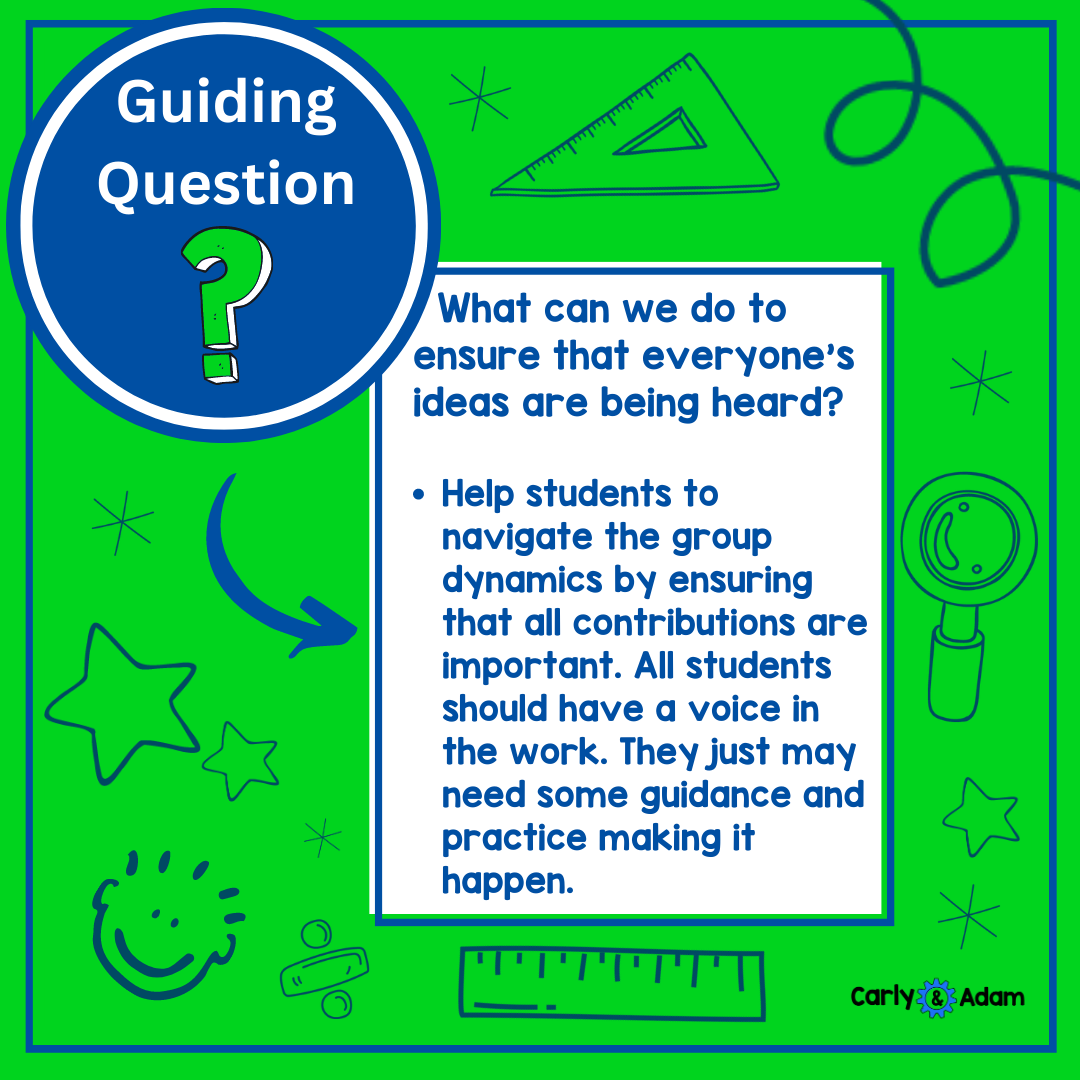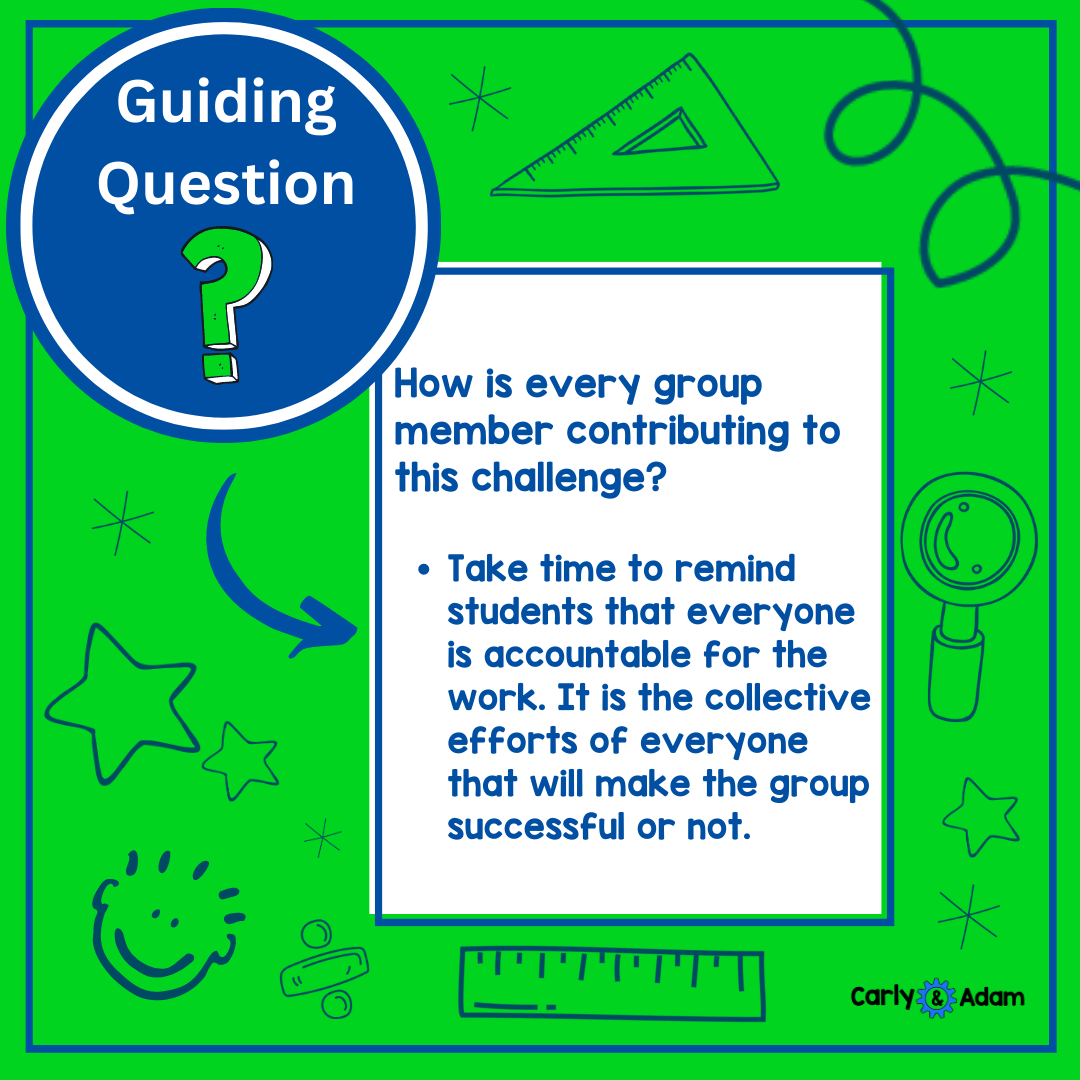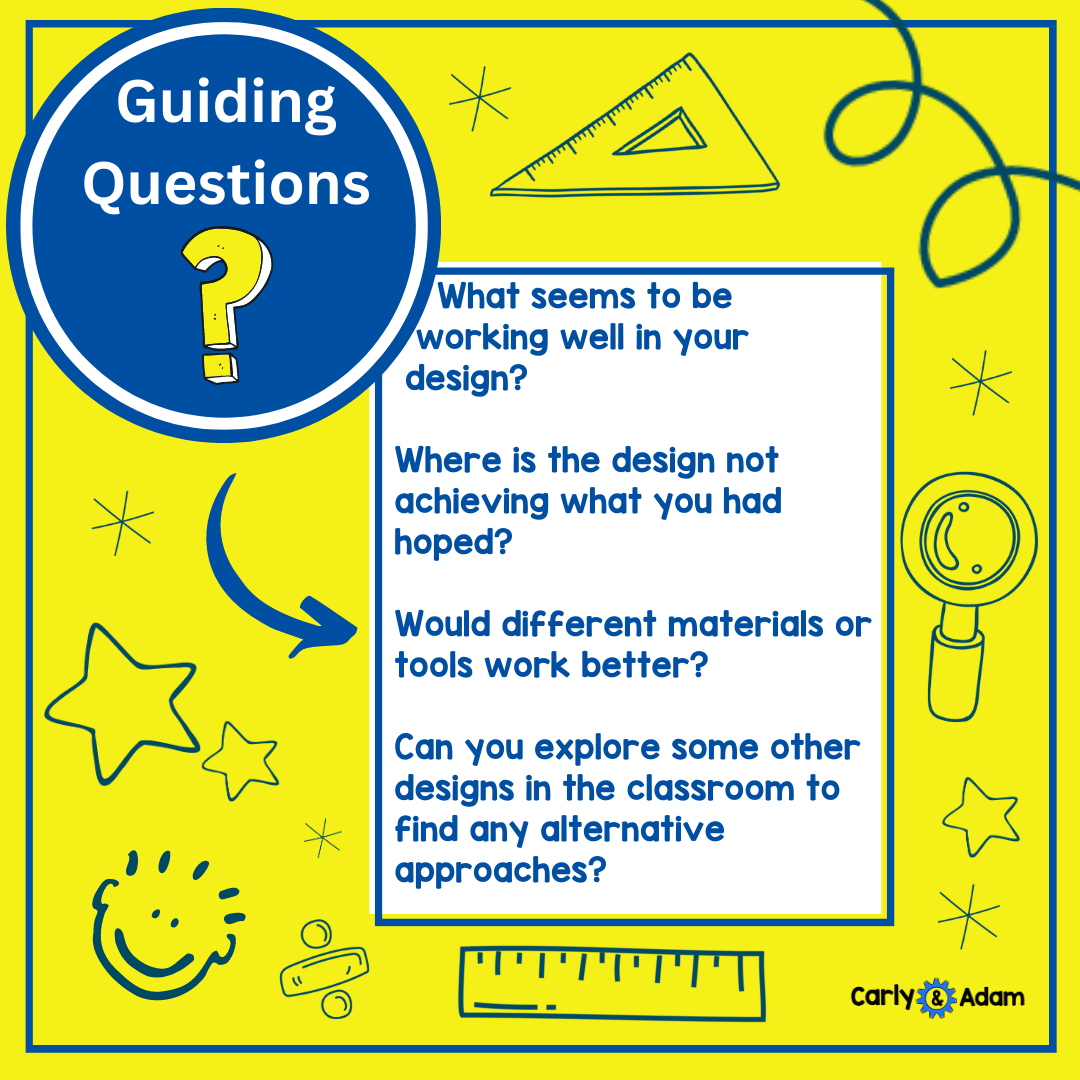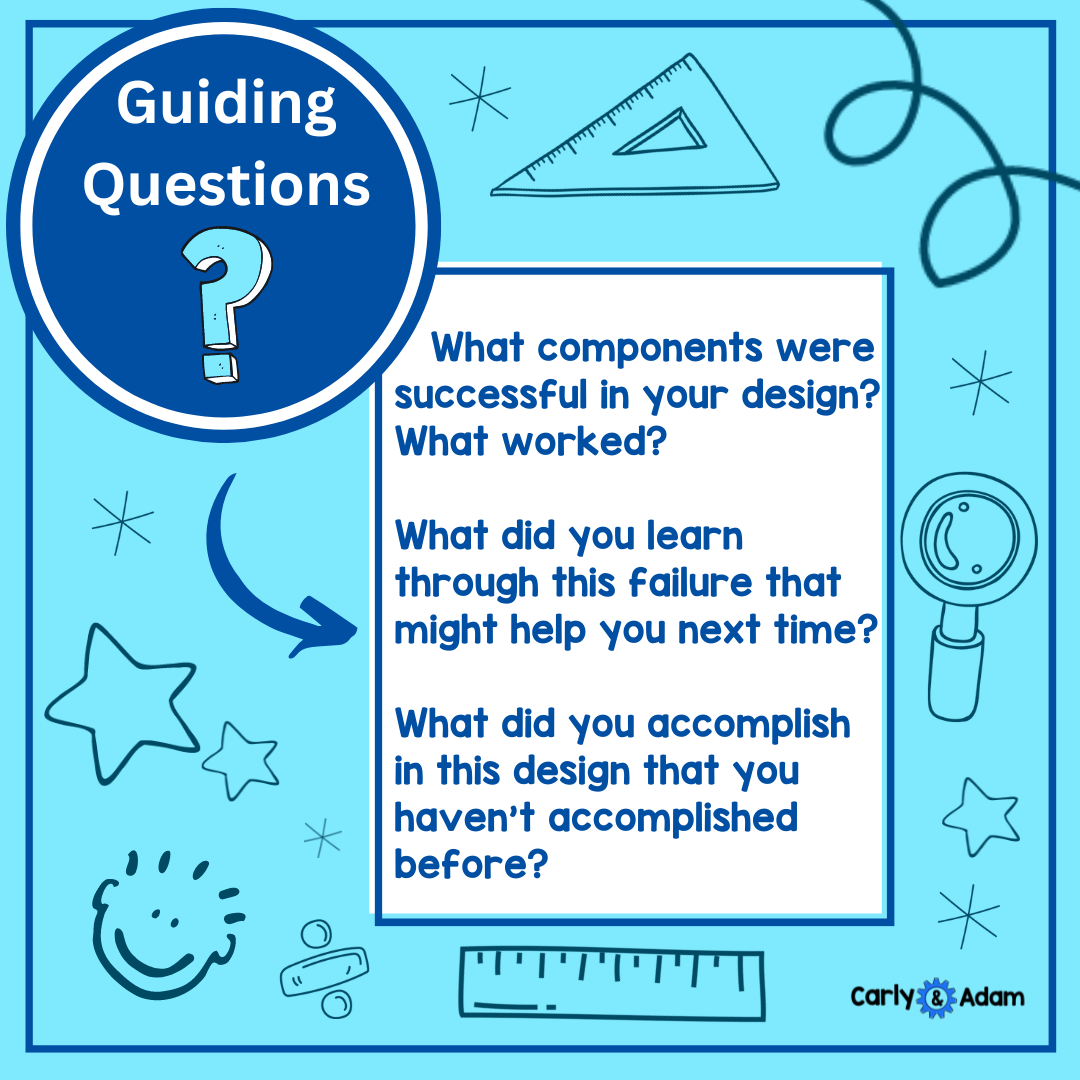How to Give Feedback During a STEM Challenge
The following is a guest post from Dr. Jacie Maslyk.
When students engage in a STEM challenges, their emotions can range from utter frustration to extreme jubilation. They are collaborating with their team when all of a sudden their plan doesn’t come together.
As they test a prototype, it begins to break and they fail in their first attempt. “Ugh! I can’t do this! I don’t know what to do!” These are common situations in most STEM classrooms.
How we respond to students and ultimately how they respond when faced with an obstacle is critical in the development of a growth mindset.
This post will share a variety of scenarios that you and your students may have experienced. We will share some ideas for how to respond in a way that gives meaningful feedback to students and moves them forward in their learning.
Let’s think about some of the common pitfalls that our students encounter. In each situation, think about the kind of feedback you might share with them or the questions that you might ask. Our feedback should empathize with what they are feeling, while our questions should get them to reframe the problem. Our goal is to nudge students beyond the point of being stuck and foster their thinking and motivation to move ahead.
Getting Started
The STEM challenge is shared with the class. Students are to design a tool to help a character in the story you’ve just read. One student sits with an empty planning page and declares, “I just don’t know what to do!”
Some students may struggle during this phase of the design process. They may need prompting and support in order to overcome this initial obstacle. Sometimes students just need to know that this is something that designers and engineers face all the time. Think about the supportive feedback that we can offer students, as well as potential questions that we might ask to keep them engaged in the process.
Feedback:
I understand that getting started seems overwhelming. Let’s think about how to break this down into manageable parts.
What is the problem that needs to be solved?
Getting students to summarize the challenge helps to ensure that they understand what is being asked of them.
What are some words that you would use to describe a successful solution to this problem?
Is it a structure that needs to be tall or strong?
Is it an invention that needs to be mobile?
Does it require materials that are flexible?
What ideas initially came to mind?
Brainstorming lots of ideas and then focusing on the more plausible ones is part of the engineering design process.
Start doodling. This may help to generate ideas.
Group Dynamics
Whether students are working with a partner or in a small group, sometimes the group dynamics will flow smoothly and other times, they won’t. Imagine a group of students working together on a challenge when one just crosses their arms and walks away. Another is leading the group and calling out orders for the other two who look on with uncertainty.
Feedback:
I see that your group needs to reconnect and refocus on this challenge. Let’s talk about what is working well and what we might need to work on.
What can we do to ensure that everyone’s ideas are being heard?
Help students to navigate the group dynamics by ensuring that all contributions are important. All students should have a voice in the work, they just may need some guidance and practice making it happen.
How is every group member contributing to this challenge?
Take time to remind students that everyone is accountable for the work. It is the collective efforts of everyone that will make the group successful or not.
I’m Stuck!
Within most challenges, there will be a time when a student proclaims, “I’m stuck” or some version of this. When they think they can’t do it or they aren’t sure how to move forward, they may need some guidance or prompting to push through.
Feedback:
It can feel so frustrating to be stuck in your thinking. Let’s brainstorm some ways that we can get you moving forward.
What seems to be working well in your design?
Where is the design not achieving what you had hoped?
Would different materials or tools work better?
Can you explore some other designs in the classroom to find any alternative approaches?
When students are feeling stuck mid-challenge, they might also need an opportunity to decompress. Using SEL strategies or other means to calm down, relieve stress or regroup can also help students. Sometimes just pausing and reflecting can be what is needed to get back on track.
Failure
Groups have been working on contraptions that need to have moving/working parts. Teams have worked diligently for some time but as they begin to try out their functions, things take a turn. One group is feeling defeated after their components just don’t seem to work as planned. When that feeling of failure sets in, it is important to provide feedback to students on things that they did well and encouragement for how they might move forward.
Feedback:
Part of the engineering and design process includes the opportunity to prototype and test designs. When our creations aren’t successful it can feel like all of our work was for nothing.
What components were successful in your design? What worked?
What did you learn through this failure that might help you next time?
What did you accomplish in this design that you haven’t accomplished before?
The way we respond to students in challenges can inhibit or propel their learning. Whether students are in the planning phase, creating a new design, or reflecting on a challenge, our feedback can help to develop a mindset that supports STEM learning.
These experiences will challenge our students. They will have amazing successes and miserable failures. We can be intentional about our feedback to students so that students will be able to persevere in the face of any challenge.
Ultimately, we want to set our students up for success when we plan our units of instruction. We want them to be challenged, but also supported when they encounter obstacles.
Our feedback, including our prompting and questioning strategies is an important instructional tool to push student thinking and advance their problem-solving skills, while also developing their ability to work collaboratively and persevere.
Have more questions or need additional resources?
Join the STEM Teachers Club Membership.
Join our Free Facebook Group.
For more STEM ideas, inspiration, and collaboration with other STEM teachers be sure to join our FREE Facebook group Elementary STEM Teachers with Carly and Adam!
We hope you have found this blog post helpful. To stay connected with Carly and Adam's teaching tips and classroom freebies be sure to follow us on Facebook, Pinterest, Teachers Pay Teachers, and subscribe to our blog!
An educator for the last 23 years, Dr. Jacie Maslyk, has served as a classroom teacher, reading specialist, elementary principal, and assistant superintendent. She is the author of STEAM Makers: Fostering Creativity and Innovation in the Elementary Classroom, Connect to Lead: Power Up Your Learning Network to Move Your School Forward (ISTE), Remaking Literacy: Innovative Instructional Strategies for Maker Learning and Unlock Creativity: Opening a World of Imagination With Your Students. You can read more on her blog, Creativity in the Making, at www.jaciemaslyk.blogspot.com. Connect with Jacie on Twitter @DrJacieMaslyk or email her at jaciemaslyk@gmail.com .



